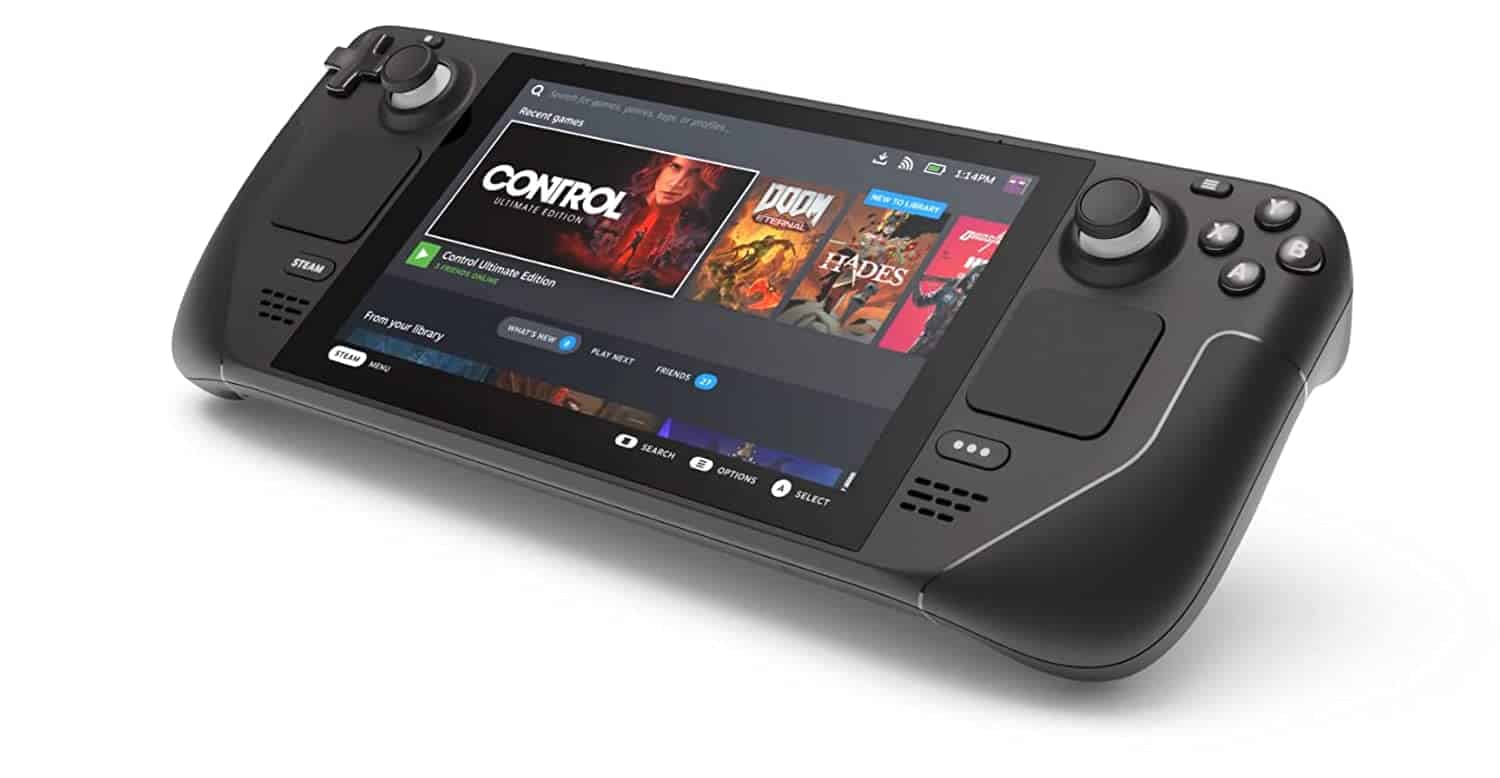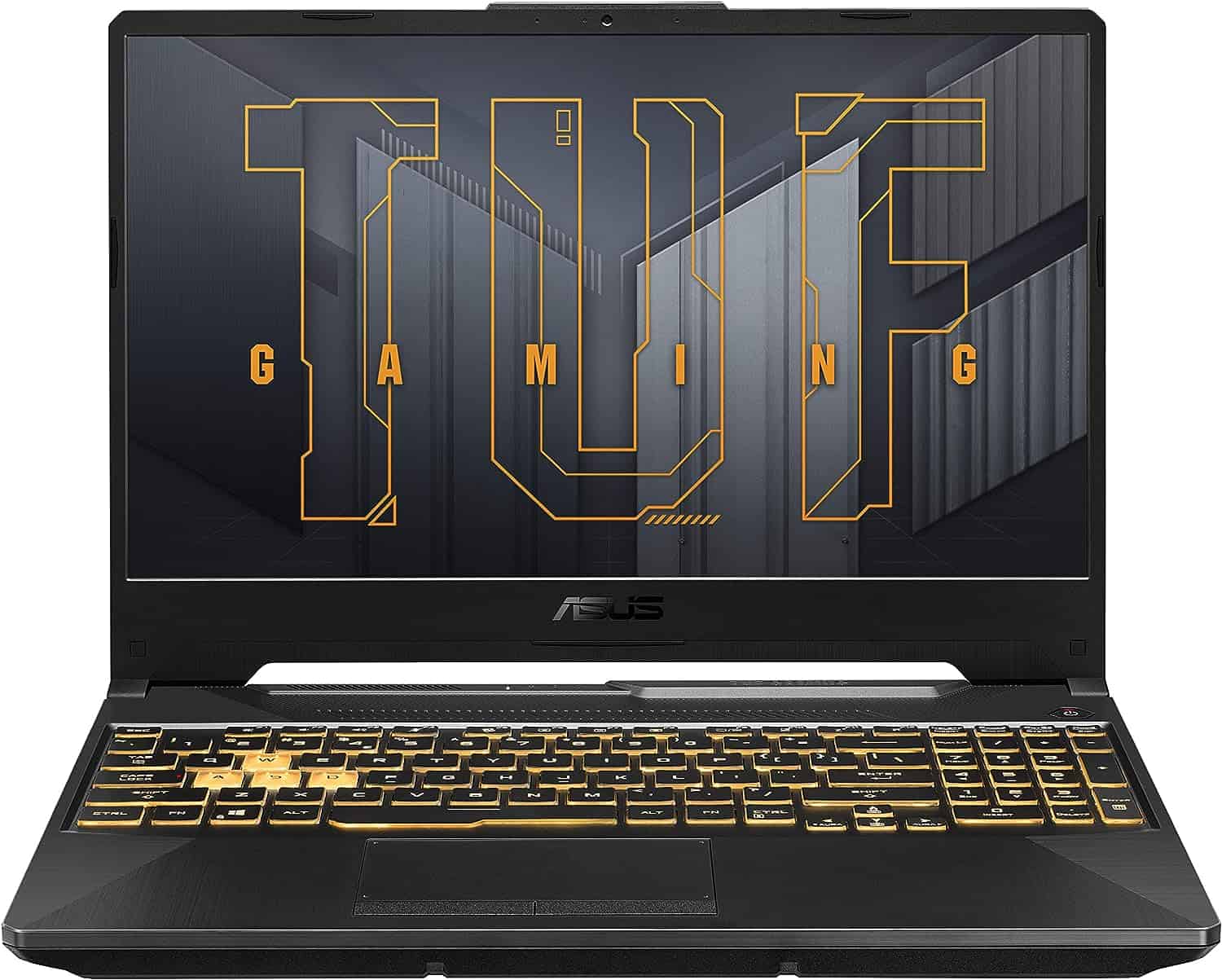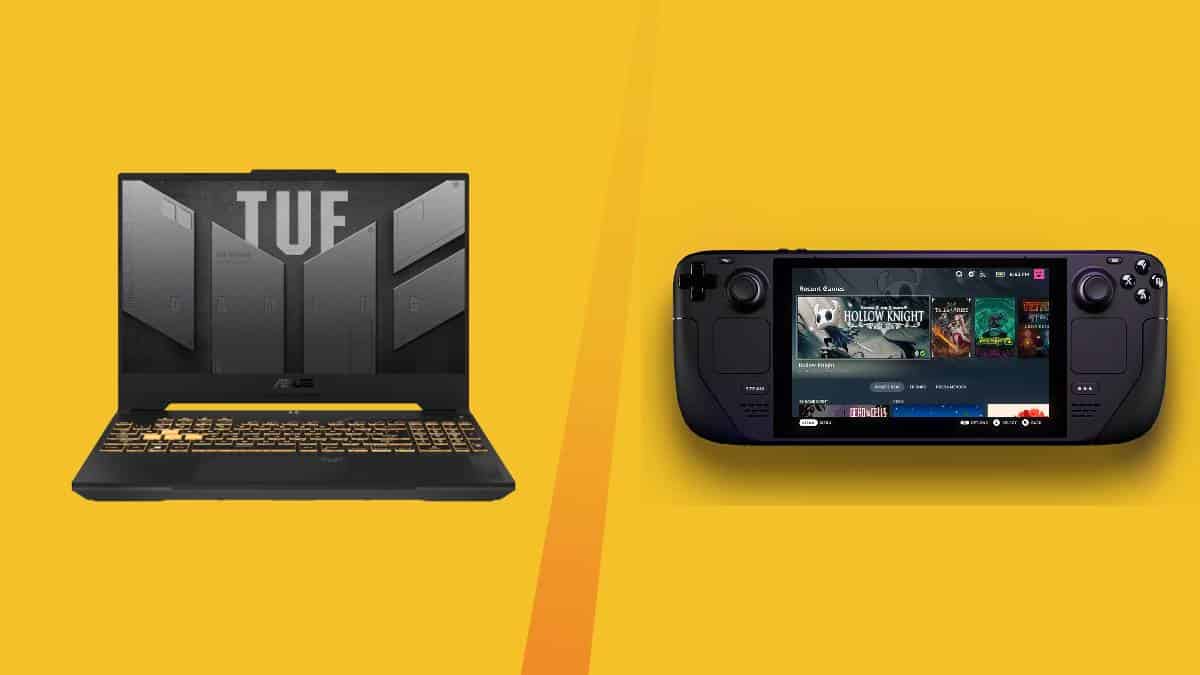You can trust VideoGamer. Our team of gaming experts spend hours testing and reviewing the latest games, to ensure you're reading the most comprehensive guide possible. Rest assured, all imagery and advice is unique and original. Check out how we test and review games here
If you’re trying to decide between gaming laptop vs Steam Deck then we’ve got you covered.
The Steam Deck offered something new when it was released. It was a simple, self-contained, and transportable way to play PC games. It quickly proved a winning formula, leading to an avalanche of new handheld consoles. We’ve already seen how it shapes up vs the Asus Rog Ally, but how does it compare to a traditional gaming laptop?
Like the Steam Deck, a gaming laptop offers a self-contained way to play PC games and one that you can take on the go. What’s more, there’s also a huge variety of them on the market, making it easier to get one tailored to your exact needs.
Because of this variety, we have broken our comparison down into distinct sections and tried to give you an overview of the devices in each one. This should give you a broader sense of what’s on offer, so you can make an informed decision. Let’s get into it.
Steam Deck Specs
Steam Deck Specs
- Display: 7in
- Resolution: 1280 x 800p
- Refresh rate: 60Hz
- GPU: AMD RDNA 3
- CPU: AMD Zen 2
- RAM: 16GB LPDDR5
- Storage: 64GB, 256GB, 512GB
As you can see the Steam Deck comes in three different versions, each with a different amount of storage. Note that the 64GB is not only the smallest amount of storage but also the only one to use slower eMMC storage, while the other two use faster NVMe SSD storage, which you can expect from the majority of gaming laptops.
The RAM count is high and suitable for modern gaming, as is the custom RDNA 3 GPU. If you compare RDNA 3 vs RDNA 2, you see that this latest architecture from AMD is one of the most advanced ever developed, and the one that the best AMD GPUs use. Thanks to its chipset design and improvements to Infinity Cache, RDNA 3 GPUs are able to provide more computing power while consuming less power.
The Steam Deck’s resolution may not look too impressive but remember that the size of the display is only 7 inches, meaning that pixel density is still high. What’s more there is the option to dock the Steam Deck. When you do this it can actually output graphics all the way up to 4K, though the 60Hz maximum refresh rate remains the same.
Gaming laptop Specs
We haven’t listed any specific specs for a gaming laptop, as there is an almost infinite amount of variety out there. If you are willing to pay for it you can get your hands on something like the Alienware x17 R2, with 64GB of RAM, one of the best GPUs money can buy, as well as one of the best CPU and motherboard combinations. It will set you back a good bit of cash though.
Overall, the specs of the Steam Deck put it in line with a low to mid-range gaming laptop. The internal components are pretty good but you would tend to find the display on a gaming laptop of a similar price slightly superior.
Gaming laptop vs Steam Deck – Performance
The components in the Steam Deck point to a mid-range gaming device that should have decent gameplay across major titles. That is often the case. In many popular Steam games, the Deck impresses with high frame rates and smooth controls.
However, it is not uncommon for a game to run very poorly, or even fail to paunch at all. This is not necessarily the fault of the components but of the OS. The Steam Deck runs off a custom version of the Linux OS. This means it is only compatible with specific games within the Steam library, ones that have been ported. This is what led Valve to start listing games as Steam Deck verified, as all too often a game that works fine on your PC simply won’t launch on the Steam Deck.
A gaming laptop meanwhile, will almost invariably use Windows. This grants you access to all the major gaming stores, not just Steam. This includes the Epic Games Store, Ubisoft Connect, and much more. Not only that, but you can also buy one with more powerful specs giving you even more impressive performance.
Gaming laptop vs Steam Deck – Price
There are three different Steam Deck’s available to be bought. Each has a different amount of internal storage capacity. The most affordable Steam Deck costs just $399 and offers you 64GB of storage. Alternatively, you can get 256GB for $529, or 512GB for $649.
Gaming laptops come in a pretty wide range of prices. The best gaming laptops under $1000 can even go as low as $500, while still offering decent gaming performance. Storage is generally much cheaper with a gaming laptop, and you would never find one with a mere 64GB of storage. We linked below to the Asus TUG Gaming F15, as it is in a similar price category to the Steam Deck and boasts largely similar specs, though with a superior display and slightly more powerful internal components.
Valve Steam Deck

Display size
7in
Resolution
1280 X 800
Refresh rate
60Hz
Storage
64GB, 256GB, 512GB
RAM
16GB
ASUS TUF Gaming F15

GPU
Nvidia RTX 3050 Ti
CPU
Intel Core i5-11400H
RAM
16GB DDR4
Resolution
1920 x 1080 pixels
Display size
15.6”
Should you buy a gaming laptop or a Steam Deck?
We reckon that overall, a gaming laptop is a more sensible purchase than the Steam Deck, though that is not necessarily true for everyone. One of the main advantages of gaming laptops over the Steam Deck is their versatility. They can also seamlessly function as a portable computer for your daily needs, be it work, education or just surfing the web.
Another reason to consider a gaming laptop over the Steam Deck is that they have the ability to be far more powerful. If you’ve got the cash to spend and want the top gaming performance possible, a top-end gaming laptop is definitely what you want to go for.
That said, if you already own a decent laptop, but one that has poor gaming performance, and you’re looking for a way to play on the go, the Steam Deck is a very fun console, that grants access to a wide range of Steam Games. What’s more, it comes with two controllers built-in, making transitioning to docked play with a monitor a simple ordeal.







